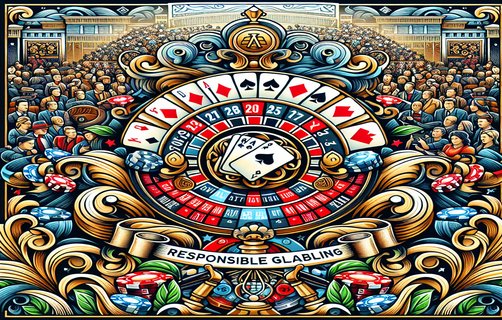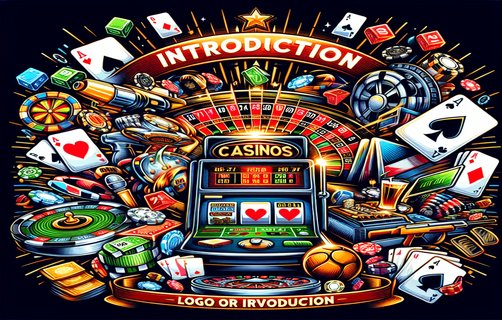Mastering the Poker Circle: Strategies for Success
पोकर सर्कल में महारत: सफलता की रणनीतियाँ
In the high-stakes world of poker, where fortunes can turn with the flip of a card, players gather around a circle that is as much about strategy as it is about chance. The poker circle embodies a unique social and psychological dynamic that influences every hand played. Understanding movement cue detection, table layout clarity, and managing game blunders can provide a significant advantage. This essay explores the various dimensions of poker strategy, focusing on pacing evaluation, odds technologies, long-term profit goals, and the necessity of cool-headed decision-making.
Movement cue detection pertains to recognizing and interpreting the non-verbal behaviors of fellow players. These could include subtle shifts in posture, the glance of an eye, or even the way a player handles their chips. By honing this skill, you can decipher an opponent's confidence or anxiety, allowing for educated guesses about their hand strength. This behavioral intelligence is vital in a game defined as much by psychological warfare as it is by the cards dealt.

Equally important is table layout clarity. Professional poker tables are designed to facilitate clear observation among players, with features that eliminate distractions and enhance focus. A well-structured setting not only aids strategic thinking but also aligns with the psychological aspect of the game, providing a sense of order in what can otherwise be chaotic bet exchanges. Recognizing your environment helps you adapt your strategies, as certain layouts may favor aggression versus caution.
Game blunder control involves the ability to minimize mistakes that could undermine your long-term profitability. Even experienced players can find themselves caught in a whirlwind of misplays, often leading to disastrous outcomes. Establishing a system for self-review after games, complemented by guiding principles to follow during play, helps mitigate these costly errors. Analyzing past hands can inform better decision-making and reduce the likelihood of repeating mistakes.
Pacing evaluation strategies are crucial in maintaining a rhythm that suits your style while also off-putting to your opponents. It’s essential to balance aggression with restraint. For instance, knowing when to ramp up the tension with strategic bets while also recognizing moments of retreat can fortify your position within the game. Each pace fluctuation can serve as a psychological ploy, resulting in the discomfort or uncertainty of your opponents.
Odds technologies have revolutionized the way players approach betting strategies. With tools that calculate probabilities in real time, players can make informed decisions that maximize their potential for profit. However, it's essential to strike a balance between relying on technology and trusting one’s instincts. The best players are those who navigate calculations and psychological plays harmoniously.
Players with long-term profit goals understand that poker is not merely a game of cards; it's an investment strategy. By playing a consistent game focused on sustainability rather than short-term gains, players are more likely to exit the poker circle with their wallets intact. This involves analyzing game styles, betting patterns, and risk tolerances—not just for oneself, but also for opponents.
Lastly, maintaining cool thinking focus is crucial. The poker circle can generate a whirlwind of emotions, from elation to despair. The key is to remain composed, allowing players to think clearly and strategically. Techniques such as mindfulness or breathing exercises can be employed to manage the tumult of emotions, ensuring that decisions remain rooted in strategy rather than the heat of the moment.
In conclusion, mastering the intricacies of the poker circle is an art that requires an amalgamation of strategic analysis, psychological insight, and personal discipline. Players who cultivate skills in movement cue detection, table layout clarity, game blunder control, pacing, odds assessment, setting long-term goals, and emotional regulation position themselves to not only survive but thrive in this captivating game of chance.
पोकर की उच्च-दांव वाली दुनिया में, जहां एक कार्ड के फ्लिप के साथ भाग्य बदल सकते हैं, खिलाड़ी एक सर्कल के चारों ओर इकट्ठा होते हैं जो रणनीति के साथ-साथ अवसर के बारे में भी है। पोकर सर्कल एक अद्वितीय सामाजिक और मनोवैज्ञानिक गतिशीलता को प्रदर्शित करता है जो हर हाथ के खेल को प्रभावित करता है। मूवमेंट क्यू डिटेक्शन, टेबल लेआउट स्पष्टता और गेम ब्लंडर को प्रबंधित करना एक महत्वपूर्ण लाभ प्रदान कर सकते हैं। यह निबंध विभिन्न आयामों का पता लगाता है, जिसमें पेसिंग मूल्यांकन, ऑड्स प्रौद्योगिकियां, दीर्घकालिक लाभ लक्ष्यों और ठंडी सोच निर्णय लेने की आवश्यकता पर ध्यान केंद्रित किया गया है।
मूवमेंट क्यू डिटेक्शन का तात्पर्य है कि सह-खिलाड़ियों के गैर-मौखिक व्यवहारों को पहचानना और व्याख्या करना। इनमें शारीरिक स्थिति में सूक्ष्म बदलाव, आँखों की झलक या यहां तक कि एक खिलाड़ी द्वारा चिप्स को कैसे संभालना शामिल हो सकता है। इस कौशल को निखारकर, आप प्रतिकूल की आत्मविश्वास या चिंता को समझ सकते हैं, जिससे उनकी हाथ की मजबूती के बारे में शिक्षित अनुमान लगाने की अनुमति मिलती है। यह की व्यवहारिक बुद्धिमत्ता एक खेल में महत्वपूर्ण है जिसे मनोवैज्ञानिक युद्ध के रूप में परिभाषित किया गया है।

इसी प्रकार, टेबल लेआउट स्पष्टता बहुत महत्वपूर्ण है। पेशेवर पोकर टेबल इस प्रकार से डिजाइन की जाती हैं कि वे खिलाड़ियों के बीच स्पष्ट अवलोकन को बढ़ावा देती हैं, जिसमें ऐसे फीचर्स शामिल होते हैं जो विकर्षणों को खत्म करते हैं और ध्यान केंद्रित करते हैं। एक सुव्यवस्थित सेटिंग न केवल रणनीतिक सोच में मदद करती है बल्कि खेल के मनोवैज्ञानिक पहलुओं के साथ भी मेल खाती है, जो अराजक दांवों के आदान-प्रदान के बीच क्रम की भावना प्रदान करती है। अपने आसपास की पहचान करना आपको अपनी रणनीतियों को अनुकूलित करने में मदद करता है, क्योंकि कुछ लेआउट आक्रामकता के मुकाबले सावधानी को प्राथमिकता दे सकते हैं।
गेम ब्लंडर नियंत्रण में उन गलतियों को कम करने की क्षमता शामिल होती है जो आपके दीर्घकालिक लाभप्रदता को कमजोर कर सकती हैं। यहां तक कि अनुभवी खिलाड़ी अक्सर गलतियों के चक्रव्यूह में फंस सकते हैं, जो अक्सर विनाशकारी परिणामों का कारण बनता है। खेलों के बाद आत्म-समिक्षा के लिए एक प्रणाली स्थापित करना, साथ ही खेलने के दौरान पालन करने के लिए मार्गदर्शक सिद्धांत भी इन महंगे गलतियों को कम करने में मदद करता है। पिछले हाथों का विश्लेषण बेहतर निर्णय लेने में मदद कर सकता है और गलतियों के दोहराने की संभावना को कम कर सकता है।
पेसिंग मूल्यांकन रणनीतियाँ आपके स्टाइल के अनुकूल एक रिदम बनाए रखने में महत्वपूर्ण हैं, जबकि यह आपके प्रतिकूलों को भी परेशानी में डाल सकती है। आक्रामकता और संयम के बीच संतुलन स्थापित करना आवश्यक है। उदाहरण के लिए, जानना कब रणनीतिक दांव के साथ तनाव बढ़ाना है, और कब पीछे हटना है, आपके गेम में आपके स्थान को मजबूत कर सकता है। प्रत्येक पेस परिवर्तन एक मनोवैज्ञानिक चाल के रूप में कार्य कर सकता है, जिससे आपके प्रतिकूल के अनिश्चितता या असुविधा उत्पन्न होती है।
ऑड्स प्रौद्योगिकियाँ दांव लगाने की रणनीतियों को अपनाने के तरीके में क्रांति ला चुकी हैं। ऐसे उपकरणों के साथ जो तात्कालिक समय में संभावनाओं की गणना करते हैं, खिलाड़ी सूचित निर्णय ले सकते हैं जो उनके लाभ के लिए अधिकतम हैं। हालांकि, तकनीक पर निर्भर रखना और अपने सहज ज्ञान पर विश्वास करना दोनों के बीच संतुलन बनाए रखना आवश्यक है। सबसे अच्छे खिलाड़ी वे हैं जो गणनाओं और मनोवैज्ञानिक खेलों को सामंजस्यपूर्वक नेविगेट करते हैं।
दीर्घकालिक लाभ लक्ष्यों को समझने वाले खिलाड़ी समझते हैं कि पोकर सिर्फ एक कार्ड का खेल नहीं है; यह एक निवेश रणनीति है। स्थिरता के बजाय तात्कालिक लाभ पर ध्यान केंद्रित करके लगातार खेल खेलने से खिलाड़ी अधिक संभावना से पोकर सर्कल को अपने बटुए के साथ सुरक्षित रूप से छोड़ने के लिए है। इसमें गेम शैलियों, दांव करने की नीतियों और जोखिम सहिष्णुता का विश्लेषण करना शामिल है—न केवल स्वयं के लिए बल्कि प्रतिकूलों के लिए भी।
अंत में, ठंडी सोच पर ध्यान बनाए रखना महत्वपूर्ण है। पोकर सर्कल एक भावनाओं का तूफान उत्पन्न कर सकता है, खुशी से लेकर निराशा तक। कुंजी यह है कि खिलाड़ी शांत रहें, जिससे निर्णय स्पष्ट और रणनीतिक तरीके से सोचने की अनुमति मिलती है। माइंडफुलनेस या श्वसन अभ्यास जैसी तकनीकों को लागू करके भावनाओं के उथल-पुथल को प्रबंधित किया जा सकता है, यह सुनिश्चित करते हुए कि निर्णय रणनीति में बनी रहें न कि क्षण की गर्मी में।
इस प्रकार, पोकर सर्कल की पेचीदगियों में महारत हासिल करना एक कला है जो रणनीतिक विश्लेषण, मनोवैज्ञानिक अंतर्दृष्टि और व्यक्तिगत अनुशासन का एक संयोजन आवश्यक है। खिलाड़ी जो मूवमेंट क्यू डिटेक्शन, टेबल लेआउट स्पष्टता, गेम ब्लंडर नियंत्रण, पेसिंग, ऑड्स मूल्यांकन, दीर्घकालिक लक्ष्यों और भावनात्मक विनियमन में कौशल विकसित करते हैं, न केवल जीवित रहने के लिए बल्कि इस मोहक अवसर के खेल में उन्नति के लिए खुद को स्थापित करते हैं।

comments
PokerGuru90
This article really opened my eyes to the psychological aspects of poker. I'm going to start focusing more on movement cues!
ChipMaster69
Great insights here! I’ve always underestimated table layout effects but I see now how crucial they are.
AceOfSpades
The section on pacing strategies was especially useful. It's all about rhythm!
AllInBetty
Long-term goals are so important! Short-term wins can be tempting, but I’m focusing on the bigger picture now.
CalmCoolKevin
Maintaining a cool head is key, definitely going to try some mindfulness techniques at the table.
BluffMaster23
Poking into the psychological warfare of poker really gave me a fresh perspective. Thanks for sharing!